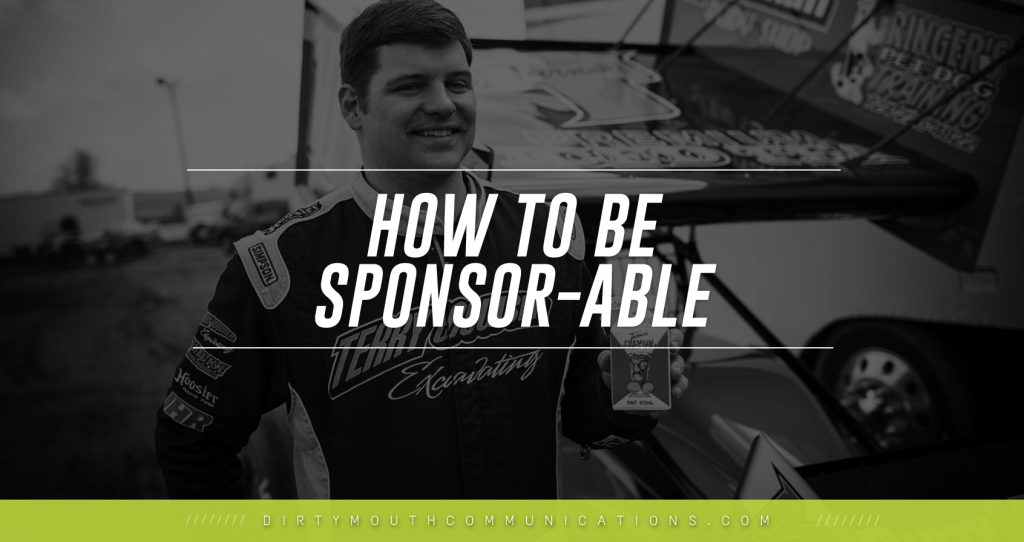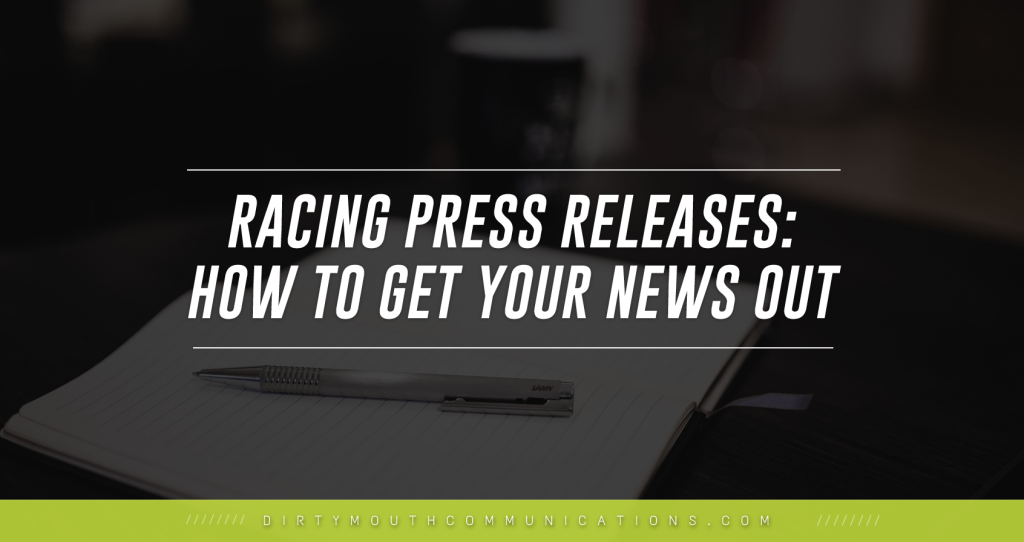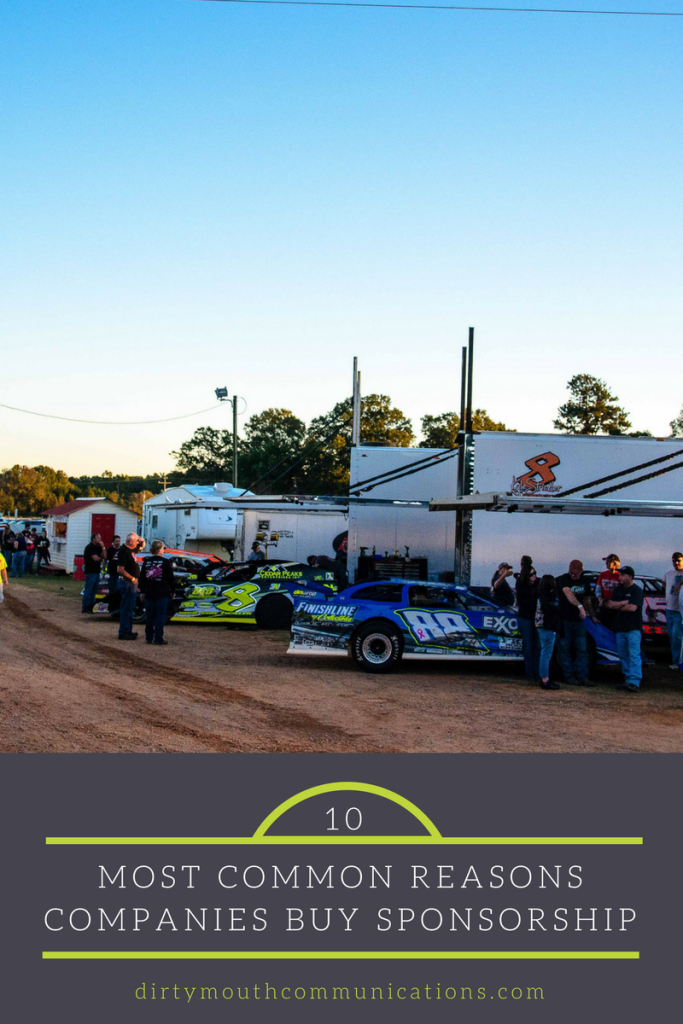Where all the fun happens.
Dropping knowledge left and right. But mostly left.
Helping Marketing Partners Achieve Goals Starts with Knowing What They Are.
When you’re pitching a sponsor or creating a proposal for a potential marketing partner, you can exponentially increase the odds of  moving forward in the process if you know what that company’s goals are and how you can help achieve them.
moving forward in the process if you know what that company’s goals are and how you can help achieve them.
But how do you get that information?
All businesses want to increase their bottom line.
That’s the obvious.
Most companies want to do that by selling more products or services. But pitching on the ‘I can expose your product to more eyeballs’ line is way too general for most companies to take seriously.
They might want to sell more of their products or services via social media, which often has a lower cost of customer acquisition, or they might want to sell more of their products to their existing customers, or find new customers, or sell higher-priced products, etc.
The more specific you can get in solving a problem, need or desire, the more chance you have at the decision-maker finding a fit with your solution.
(Bonus: the pricing matters less when you’re providing a clear solution to an expensive or difficult problem.)
What other problems might companies want to solve?
- Saving money on products or services they utilize adds as much to their bottom line as selling more products. If you can help them do that, you’re providing value.
- Providing access to a marketplace – say, getting their product on the shelves of an auto parts store chain or having them picked up in a catalog – can provide direct value.
- Brand-building activities like a positive role in the community, access to an influencer’s network, emphasizing product use or quality, and reinforcing messaging can provide value to businesses.
- Connecting their brand with a target demographic that they struggle to reach on their own can provide value.
- Attracting and retaining employees is often valuable to businesses.
All of these suggestions are potential problems or needs that you can provide a valuable solution to. And you’re going to be more likely to become the solution-provider if you know what their goals or problems or needs are.
So how do you figure that out?
Most companies – the types of companies that are more likely to be interested in actually taking action on a solution – are already out there trying to solve their problem or achieve their goal. And they leave breadcrumb trails that you can follow.
Hint: the word ‘Google’ is about to happen. A lot.
For example, businesses generally only issue press releases for news that is important to them. Check out the news section of their website, or read their press releases when you Google their company. If they recently launched a product, they’re probably putting focus there. Did they just open a new location? They might need to drive traffic specifically to that store.
Look at what they’re doing on social media. Are they active on one particular platform? That can give you a clue into what demographics they’re looking to reach. What kind of content are they putting out, and what subject does it cover?
Google them. What are people saying about them? Are their reps being quoted in articles? What can you glean from that information?
Finally, and this might sound crazy and irrational, but consider actually talking to them! You might not be able to get a decision-maker on the phone, but having even a casual conversation with a delivery driver, vendor, executive’s nephew or anyone else you can politely and genuinely engage with.
Good luck, my friend, in helping your partners achieve their goals. That’s the best way to build a mutually beneficial, long-term relationship.
xo.
Kristin
P.S. Want more on this topic? Here’s another post for your reading pleasure.
How to Be Sponsor-Able
 Most of the questions that I get about sponsorship center around the outbound portion of forging a relationship:
Most of the questions that I get about sponsorship center around the outbound portion of forging a relationship:
- How do I find a potential sponsor?
- Who do I talk in the company about sponsorship?
- What should I put in my proposal?
- How many times should I reach out?
- Should I mock-up my car with their logos so they can see what they’re getting?
- What should I charge for ‘x’ size logo?
But I’ve found that racers, and tracks, who have the most success with finding and keeping marketing partners are looking at it from a different angle and asking this question:
What will make my team sponsor-able?
But we’re all sponsor-able, right? I’m able to deposit that check, I know it!
It’s not so much about being able to accept or accommodate sponsorship.
It’s about building a property that’s worthy of sponsorship. And I don’t mean worthy in a moral sense.
I’m talking about building value into your brand, and then finding a marketing partner that will exchange value (i.e. money, product, access to resources, etc.) for what you provide.
I’m talking about making it easy for potential marketing companies to find you, understand the value of what you offer and build a relationship with you.
So, how do you do that?
For me, it all comes back to branding.
I got an email from a racer a few weeks ago with questions about sponsorship. He had a professional signature line on his email with a link to his website (*high fives*).
But when I opened that website…I was even more impressed with his branding! His website had clear imagery, consistent colors and graphics, an easy-to-navigate interface and just the right amount of information.
It wasn’t anything fancy, expensive or complicated, but if I was someone advising a company on whether to partner with his team (and, yes, I have done and continue to do that!) I would be much more likely to recommend his team over another property because I had a good idea of what his team represented. (If you’re reading this, great job Steve!)
You might think that branding is a fancy or expensive concept reserved only for businesses and ‘big-time’ race teams, but everything that you do, whether you intend it or not, is part of your branding.
Potential marketing partners want to be able to look at what you do – online, on the race track, in the pits, in the community – and know whether their product or service will be a good fit with the audience you attract.
They figure that out through your branding, which is represented by:
- The graphics on your car,
- The consistency of that image on everything else you do,
- Your website (or lack of) and social media channels (or lack of),
- Your messaging (and the clarity and consistency of it),
- The frequency and manner of communication with your fans,
- Your supporting materials, and
- So much more.
It doesn’t take a big investment to make yourself sponsor-able to companies. You can start for free – keeping a clean car and trailer can literally be the first step in building your brand. Then, look at what you already have – a car and a trailer, a race suit, etc. – and think about how you could make the colors or graphics more consistent when you letter the car, for example. You can launch your social media presence, or just take 10 minutes to improve the graphics and photos on the ones you already have.
It doesn’t have to be complicated or headache-worthy. You can make yourself sponsor-able at any level of racing, despite (or because of!) your age, region, experience, income level or time commitments.
That’s what I love about racing. There’s a fan or two out there for each of us. And there’s a company or two that wants to reach them. Your job is to make it easy for them to connect with you!
xo.
Kristin
P.S. Want more on this topic? Check out The Guy Who Washes His Car Goes the Fastest, How Important is Your Paint Scheme? and Make Buying Easy.
Racing Press Releases: Tips and Tricks to Get Your News Out
Ever wonder why you hear about the same racers over and over again?
They’re on podcasts, in magazines and being tweeted about by media members. And not just because they’re winning races. They’re talking about their upcoming schedules, sponsors they’ve secured and personnel changes on their team. 
Why them and not others?
Usually it has something to do with their public or media relations strategy.
As many of you know, when I worked at the San Francisco 49ers, off-the-field public relations was my specialty. Same goes for when I worked at the Arena Football League.
As you can imagine, I’ve gotten tons of questions about public relations, media relations and tactics like press releases.
First, let’s tackle the obvious:what’s the difference between public relations and media relations?
Simply put, public relations is strategically communicating or building a relationship with the public. Media relations is a type of public relations, but focuses on your relationship with the media. For example, public relations is making an announcement to your fans via your social media channels. Media relations is the act of calling or emailing your local newspaper reporter about that same news.
Now, let’s address everyone’s favorite topic: press releases, and how to do them.
Press releases are just a small part of a public relations strategy but, right or wrong, it’s where we see the focus of most teams who are ready to take their game to the next level.
Here are some simple tips and tricks on what to do (and what not to do) when issuing racing press releases by topic:
Frequency.
There are some racers who write a press release every single week while some never send a press release out, and others fall in between. What’s the best strategy? Only issue a press release when you have news to share.
There are many people in racing that might disagree, but there are few teams that have enough news for weekly racing press releases. What’s news? Picking up a new sponsor. Announcing your schedule. Winning. Doing something different than what they’d expect. That’s news.
If you’re sending media members a press release every week and they’re not getting news out of them, at some point they will stop opening your emails altogether. And then your actual news gets lost. Please don’t fall into this trap.
Distribution.
You’ve worked really hard on your newsworthy press release….don’t let it die a silent death on your hard drive or Facebook feed! Create an email list of media members that you feel would want to share this news, and then email it to them.
Two major no-no’s to avoid here: don’t just send the press release via your email account. Use an actual email service provider (Mailchimp is FREE for a very generous number of emails, and it’s what I use daily) so that the people on your list can opt-out if they don’t want to receive emails from you in the future. If you email people repeatedly and don’t give them that option, you’re spamming them and it’s illegal.
If you aren’t going to use an email service provider, please, please, please use the ‘bcc’ function on your email. DO NOT put all of the recipients email addresses in the to: field or the cc: field. It’s a huge invasion of privacy, and even if you don’t get angry emails back (tip: you probably will), it’s unlikely that the media member or influencer will be thrilled to share your news with their network.
Most senders don’t make these two mistakes maliciously, but they are serious no-no’s that you want to avoid.
Content.
First, see frequency. Having actual news in your press release is the most important part of a press release. (Hint: they’re also called news releases for that very reason.)
Second, if you’re looking for information on how to write them, we follow a simple formula: short introduction/setup, news, upcoming events or races and boilerplate (see below).
Third, keep it short and sweet so that it’s really easy for the recipient to grab the news that you want them to share, and share it.
Don’t forget to check for grammar and spelling mistakes, too!
Boilerplate.
Boilerplate is information that you include at the bottom of every release. The purpose of the boilerplate is to provide standardized information about your team (or event) for the media member’s convenience. This might include what type of racing you do, what series or tracks you normally race with, your marketing partners and where to find more information about you. I recommend including links to your website and your main (read: most active) social media channels.
Boilerplate is extremely helpful for both the media and the public, because they often need more information about you to be able to write an article, but they don’t need you to write an entire article for them. If they have to search high and low, they’re likely going to move on to someone they’re more familiar with.
Aaand, that’s it for today on racing press releases! I hope it helps you determine when, why and how to best get your news out.
xo.
Kristin
Race Track Marketing: Think Mindset, Not Demographics
When I worked in the advertising agency business, one of the first things we would do when starting a marketing, advertising or social media campaign was try to determine our ‘ideal customer’.
In fact, if you and I have ever worked together – on race track marketing or otherwise – I’ve probably walked you through an exercise to help determine who your ideal client or customer is.
Whether you’re selling sponsorship, in which case your marketing partner is your client, or selling event tickets you have to be able to address the customer’s needs, wants or problems in order to offer them a solution, i.e. your product or service.
In order to do that, you need to know who you’re marketing to. That is your ideal customer. 
Traditionally, that ideal customer profile is created around a set of demographics which might include age, gender, location, income level, race, religion, marital status, etc. This is a set of facts that we used to employ to figure out what type of person is most likely to buy Widget X or hire Service Provider Y.
For example, for an expensive laundry detergent we might traditionally have targeted moms within the ages of 38-45 who had a household income of more than $100,000 because they were the most likely to be able to spend the extra money on clothing care.
If you want to think about it in terms of racing, how many times have you heard that our short track racing fan base is aging? Or that we’re a blue-collar sport? Or that a family of four has to be able to afford the concession bill if they’re going to come to your race track. That’s a way of saying that our fans fit into certain factual demographics.
The same goes for sponsorship. How tempted have you been to target companies that are within your geographic region and ‘make a lot of money’? I’ve heard the ‘they can afford to sponsor me’ argument many, many times.
Just because a company has ‘lots of’ money, it doesn’t mean they want to give it to you. A mom with an above-average income doesn’t necessarily want more expensive laundry care. An aging blue-collar worker doesn’t necessarily want to come to your race track.
Boxing your customer into age, religion or gender demographics isn’t so easy any more.
Why? Most people don’t live (or spend) within the traditional boundaries of their ages anymore. Twenty-year-olds are living the retirement lifestyle, traveling the world in RV’s and octogenarians are starting businesses from their smartphones.
It’s all about mindset, not demographics.
That’s why our ideal client profiles are rooted more in what the customer thinks and feels than the facts we could find on their Facebook profiles.
We want to know what keeps them up at night. We want to know what their fears are. We want to know what their hopes and dreams are. We want to know how they spend their free time, what TV shows they stream, what books or magazines they read, what podcasts they listen to.
Why?
To tailor our race track marketing to what appeals to them.
Let’s give an example: If spending time with their kids is what causes them sleeplessness, marketing the quality time they’d get to spend at the race track with their family is going to be much more effective than advertising that your ticket prices are within their budget. Right?
As racers, it’s critical to understand the buying mindset of your customer, too. They’re not buying because they have a certain budget. They’re buying because you solve a certain need. This is exactly what we’ve been talking about lately – see why only winners get sponsored is a myth and the top ten reasons companies buy sponsorship for more information.
That’s where I see the biggest opportunity for us as an industry: making our customers humans and marketing to their mindsets instead of how we size them up on paper.
If you want to improve your marketing, start thinking about why your current fans or marketing partners buy from you. It’s not because it’s cheaper than going to the movies or a restaurant or buying a billboard. It’s about the experience they have with you and the solution you’re providing to them.
That’s what you need to make clear in your race track marketing to current and new fans. Don’t expect them to connect the dots. You have to do the legwork for them if you’re going to earn their business.
And that’s what’s going to turn them into raving fans, not just numbers on a spreadsheet.
xo.
Kristin
P.S. Want to flip the script on the laundry detergent example? The first thing I’d do would be to look for the benefits and match that up with the wants or needs of the consumer. Does the extra cost mean it’s eco-friendly? I’d target consumers of all demographics who were members of Recyclebank or interacted with The Honest Company on Instagram, for example. They’re much more likely to prioritize natural products and spend more, even if their income level wasn’t high.
P.P.S. That doesn’t meant the demographics don’t matter. I know the average age and income level, zip code, gender and marital status of my clients’ Twitter followers. It’s good business to know these things. But knowing that and marketing to that are two different things.
Why ‘Only Winners Get Sponsored’ is a Myth
Having worked at a speed shop for a few years, I can’t tell you how many conversations I had about sponsorship.
They generally went one of two ways: either the person was asking for sponsorship or a discount, or the person was lamenting that it was impossible to get sponsorship because they didn’t win.
I hear this myth a lot from racers who have mindset blocks around selling sponsorship: how can I sell sponsorship when I don’t win races?
Or, we hear this: It’s easy to sell sponsorship when you’re a dominant, winning team.
Equating wins to sponsorship dollars at most levels of racing is harkening back to the old days of racing, where most of the attention or exposure for the driver (and their sponsors) happened at the track. And the winning driver was the one who got the most attention.
That’s not the case anymore.
We have countless opportunities each day to reach the people who sit in the grandstands and potentially listen to your victory lane speech.

Taking your marketing partners to victory lane is a great *bonus* for your partnership.
As a property, we can:
- Put out a tweet or post.
- Respond to a message.
- Send an email newsletter.
- Snap a story.
- Sign an autograph at an appearance.
- Say hello at an industry event.
- Have our apparel worn at a fan’s workplace.
- Be featured in an article.
- Be a guest on a podcast or radio show.
- Be researched on our website.
All of these modes of communication – whether they’re things that we’re in control of or not – allow for marketing partners to have a far greater and deeper reach than a victory lane speech over a loudspeaker at a race track.
They allow marketing partners to:
- Reach a specific demographic or mindset that is more likely to be their customer, rather than ‘the entire grandstands’.
- Display photos or videos of their product their target audience, instead of relying on the logo to speak for itself.
- Put their website link in a place that the fan can actually click it to learn more or buy.
- Target their messaging to specific fans or customers.
- Create opportunities to interact with the brand directly.
Yes, marketing partners enjoy seeing their logo in victory lane. Yes, they want their messaging mentioned in the post-race interview.
But if you ask most marketing partners what the value of their sponsorship is, how many wins a team has or is expected to have is almost never at the top of that list.
It’s almost always the team’s ability to help them reach their specific objectives.
That’s a big mindset shift from the old logo-for-dollars and only-winners-get-sponsored philosophy. And the earlier you can grasp that, they sooner you can focus on determining what to offer to marketing partners to help them achieve their goals and what the value of that solution is.
Ready to make that shift? Check out the top 10 reasons companies buy sponsorship for more info.
Oh, and back to that speed shop conversation. Performance is, naturally, important to companies looking to sell their products to you and your competitors. They need to show that their products help you perform well on the track, so it is a benefit to have winners on your roster.
But that’s the tip of the iceberg.
Watching a racer throw a fit because surely if you realized how many times he put your logo in victory lane last year you would give him a bigger discount only confirmed our decision to partner with his competitor – someone who also won races, worked on his own car, had to be discerning with his budget and was either friendly with or respected by most of his competition.
His choice to use our products held much more weight with his competitors – our prime customers – and he was able to provide feedback about our products and their benefits that we wouldn’t have had otherwise. It was a valuable partnership that went beyond victory lane appearances.
And that’s what a sponsorship program has to be about, whether you’re winning or not.
xo.
Kristin
The 10 Most Common Reasons Companies Buy Sponsorship
It’s the first quarter of the year, and the last few weeks for me have had a lot of focus on working on sponsorship deals for various properties.
One common mistake that I see teams, tracks and event promoters make when pitching potential marketing partners is focusing on only one aspect of sponsorship: exposure to an audience. When I talk about slapping a logo on a car and turning circles (or nailing up a sign), this is what I’m talking about. 
Yes, ‘exposure’ is still an important part of sponsorship. But if it is the focus of your partnership, you’re only going to make it work with a few major tweaks. And I still believe, even with those tweaks, if it’s the only focus of your pitch you’re going to be in trouble.
As in zero dollars trouble.
Why?
Because exposure is generally free or cheap these days with social media, guerilla and word-of-mouth marketing and the ability for companies to build their own audiences on a variety of platforms.
In effect, purely reaching a certain number of people is going to be significantly cheaper by using other means than sponsoring your race car or track. And it’s going to be easier to explain and show ROI to a manager or company owner than trying to quantify the number of people who saw your race car or trailer.
If a company can, say, reach 2,500 people in a very specific audience through Facebook ads for $100 (which you can if you’re good at it), is it economical for them to spend the same or more for them to reach 2,500 people with just a logo in the grandstands at your weekly race? Where they will get no data about whether those people are in their very specific audience?
Probably not.
(By the way, what are those major tweaks? One is by offering exposure to a very specific set of people that the company might not otherwise be able to reach. As in, people who ride Harley Davidsons between the ages of 35 and 38 and only drink almond milk. Having a relationship with a very niche group of people can be valuable to the marketer who needs to reach them, and they will pay for access to them.)
So, if purely offering eyeballs on a logo isn’t the way to go anymore, what can you offer?
Here are the top-ten reasons that I see companies purchase sponsorship:
- Increase brand loyalty
- Show community responsibility
- Create awareness and visibility
- Change/reinforce image
- Drive retail traffic and/or sales
- Sample/display brand or product attributes
- Recruit/retain employees
- Entertain clients
- Incentivize retailers, dealers and distributors
- Differentiate product from competitors
This isn’t a hard-and-fast rule. There are plenty of other reasons that companies partner with race teams, tracks and events, but this is what I’ve seen in my personal experience and through the deals I’ve worked on.
(By the way, exposure falls under the ‘create awareness and visibility’ category.)
Now, thinking beyond offering exposure to a logo or a message, how can you create offers for companies that align with bigger (read: MORE VALUABLE) goals?
Push yourself to think outside of the logo box to what you can do for your partners to help improve their business in regards to one of their objectives.
Could you offer a VIP experience to their VIP clients, with pit passes, apparel, catering and a tour of your hauler? Could you do a taste test (in-person or on social media) of their product’s new flavor formulation to help them change the product’s image, or unbox the product from it’s new packaging? Could you offer samples of their product to their ideal customers at the race track or other events?
Yes. Yes, you can. I believe in you!! [Insert *crazy eyes* here.]
And, by the way, let’s not gloss over the part where I yelled ‘MORE VALUABLE’ a few paragraphs up.
Riddle me this: do you think it’s more valuable for company to reach a certain number of potential customers with their logo or retain just one employee, as an example?
The numbers are all over the map, but the cost of losing an employee is pretty significant for a company. A CAP study estimated that for low-wage jobs, turnover costs the company about 16% of the worker’s salary. But for mid-range positions, it jumps to 20%. Which means the cost of replacing a $40,000/year manager’s job is $8,000.
If that manager (or manager’s kid) loves racing, wouldn’t even a $5,000 partnership where the manager had season passes and a relationship with their favorite race team be worth it if that keeps the manager in their position? The partnership would pay for itself in that benefit alone.
Can you see how the more specific you get at understanding and fulfilling a company’s needs, the more valuable your partnership will be?
If you need it, here’s more information on how to increase the value of your sponsorship offerings.
xo.
Kristin
P.S. Here’s a link to the Center for American Progress study I referred to above. Yes, I am the kind of nerd that spends time researching things like this. Do you think it helps me put a more accurate value on offerings? YEP. It also helps companies to put a number on a challenge they know they have, but don’t necessarily know what it means to their bottom line. Boom.

Connect!